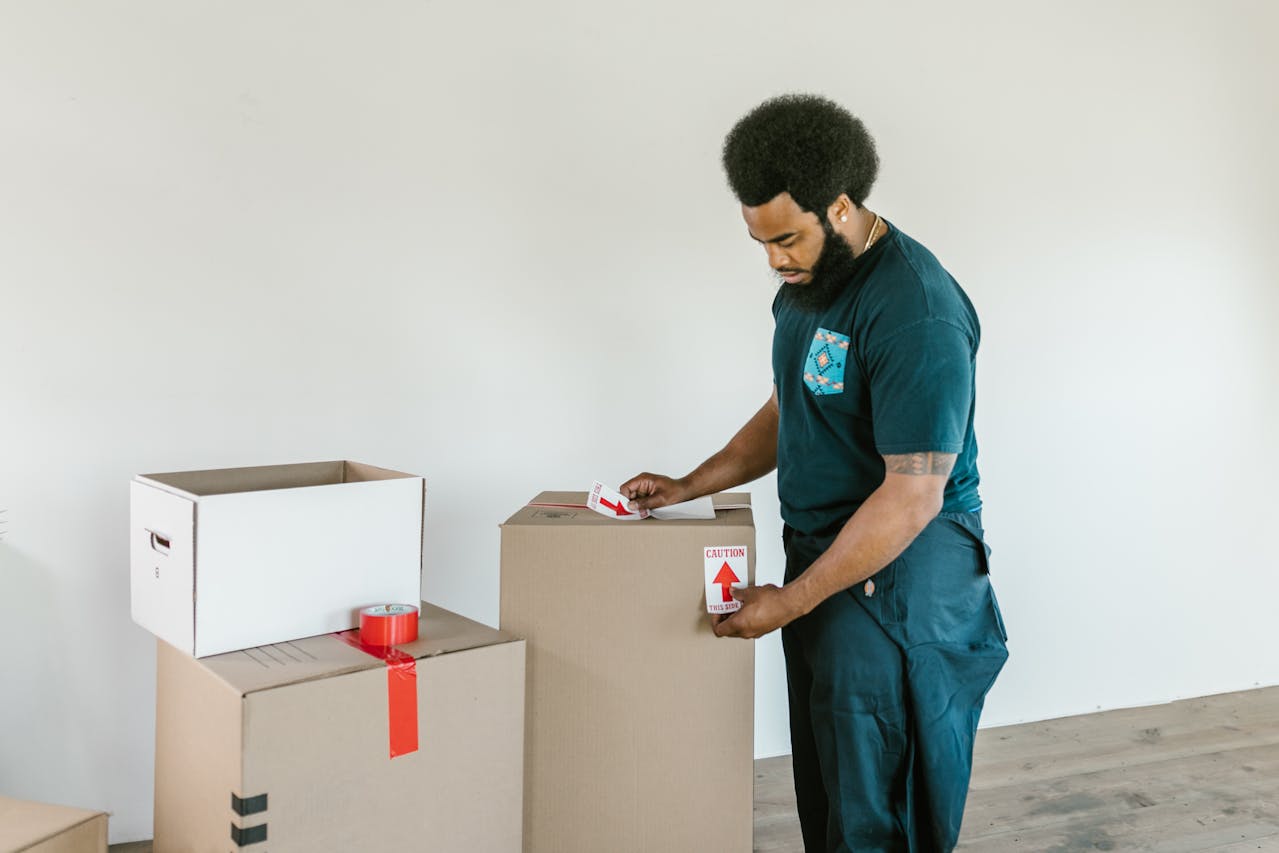Having your fragile items shipped entails meticulous attention to detail and appropriate application of fragile packaging techniques and materials. Continue reading →
If there’s one thing you shouldn’t mess around with, that’ll be shipping fragile items. Doubling down on being careful with your stuff is paramount because the slightest mishandling can result in costly damage. But all hope isn’t lost—being rightly informed about the techniques and materials can ensure your belongings will reach their destination in one piece.


This article will cover everything you need to know about packing fragile items for shipping, from selecting the appropriate materials to following best practices for secure packaging. Continue reading to learn more.
Whether you’re moving across the country or shipping servers internationally, the first step in packing fragile items is selecting the appropriate materials. Invest in high-quality packing supplies to provide optimal protection for your delicate items.
Here’s an overview of the materials you can use:
Bubble wrap and packing paper are essential for cushioning and protecting fragile items from impacts and scratches. Opt for high-quality bubble wrap with large air pockets and use packing paper to fill any gaps or create an additional layer of protection.
Packing peanuts are lightweight and can effectively fill empty spaces within a box, preventing items from shifting during transit. However, they can be messy and may not provide adequate protection for extremely fragile items.
Heavy-duty packing tape is crucial for sealing boxes securely. Choose a tape designed specifically for fragile item shipping, as it is stronger and more durable than regular tape.
Select sturdy, double-walled cardboard boxes that are slightly larger than the items you’re shipping. Avoid using boxes that are too big, as they can allow items to shift and become damaged.
Choosing the right packing materials can significantly increase the chances of your stuff arriving at the destination safely and intact.
Once you have the necessary materials, the next step is to wrap and cushion your items properly. Start by wrapping each item individually in foam sheets or bubble wrap, ensuring complete coverage and leaving no exposed areas. Pay extra attention to corners and edges, as these are particularly vulnerable to impacts. If you’re in a rush, there are specific packing tips for moving in hurry that can help streamline the process without compromising the safety of your items.
After wrapping the items, put them in the box’s center, surrounded by additional cushions such as crumpled packing paper or packing peanuts. This will create a protective barrier and prevent the items from shifting during transit.
Selecting the appropriate box size is crucial when shipping fragile items. The box should be large enough to accommodate the items and allow for ample cushioning material, but not too large, as this can lead to excessive movement during transit.
Using branded custom mailer boxes ensures your products arrive safely and enhances brand recognition and customer satisfaction.
When packing multiple items in a single box, ensure they’re separated and cushioned individually to prevent them from rubbing against each other and causing damage.
After packing the items securely, it’s time to seal the box. Use high-quality packing tape to seal all seams and edges, creating a sturdy and tamper-evident package. Apply tape in a crisscross pattern for added strength and security.
Clearly label the box with the shipping address, return address, and any necessary special handling instructions, such as “Fragile” or “This Side Up.” Use bold, legible lettering and place labels on multiple sides of the box for visibility.
When shipping temperature-sensitive or perishable items, it’s essential to consider environmental factors. Use insulated packaging materials such as styrofoam coolers or moving blankets to maintain the desired temperature range during transit.
For items sensitive to moisture or humidity, consider including desiccant packs or moisture-barrier bags to prevent damage.
Here are some additional tips to keep in mind when packing fragile items for shipping:
Before shipping, perform a drop test by gently dropping the packaged item a few inches off the ground. If you hear or feel any shifting or impacts, add more cushioning material.
For extremely fragile or valuable items, consider investing in specialized packaging solutions such as foam-lined cases or custom-designed shipping containers.
Choose a shipping service that provides tracking and monitoring options, so you can monitor the progress of your shipment and address any potential issues promptly.
Inform the recipient that they’ll be receiving a fragile package and provide any special instructions for unpacking or handling the items upon arrival.
Taking note of these practices can spell the difference between packing securely and arriving at their destination with defects.
Having your fragile items shipped entails meticulous attention to detail and appropriate application of fragile packaging techniques and materials. Being careful at every step of the way can significantly reduce the chances of your goods breaking, ensuring they arrive in the same condition as when they were shipped. Following the guidelines mentioned above will ensure the safe arrival of your items and provide a positive shipping experience for both you and the recipient.
California is making strides in solar panel recycling, a vital part of its wider environmental…
Content owners may more successfully negotiate this complicated situation by following these crucial rules, putting…
Moving to direct bookings isn't just about cutting out the middleman—it's about taking control of…
Archiving is not just a checkbox—it’s an operational habit. By combining standard file formats with…
Investing in robust remote support solutions becomes essential for enduring success. Businesses that prioritize these…
There are many reputable companies ready to install home or commercial security cameras on Long Island,…